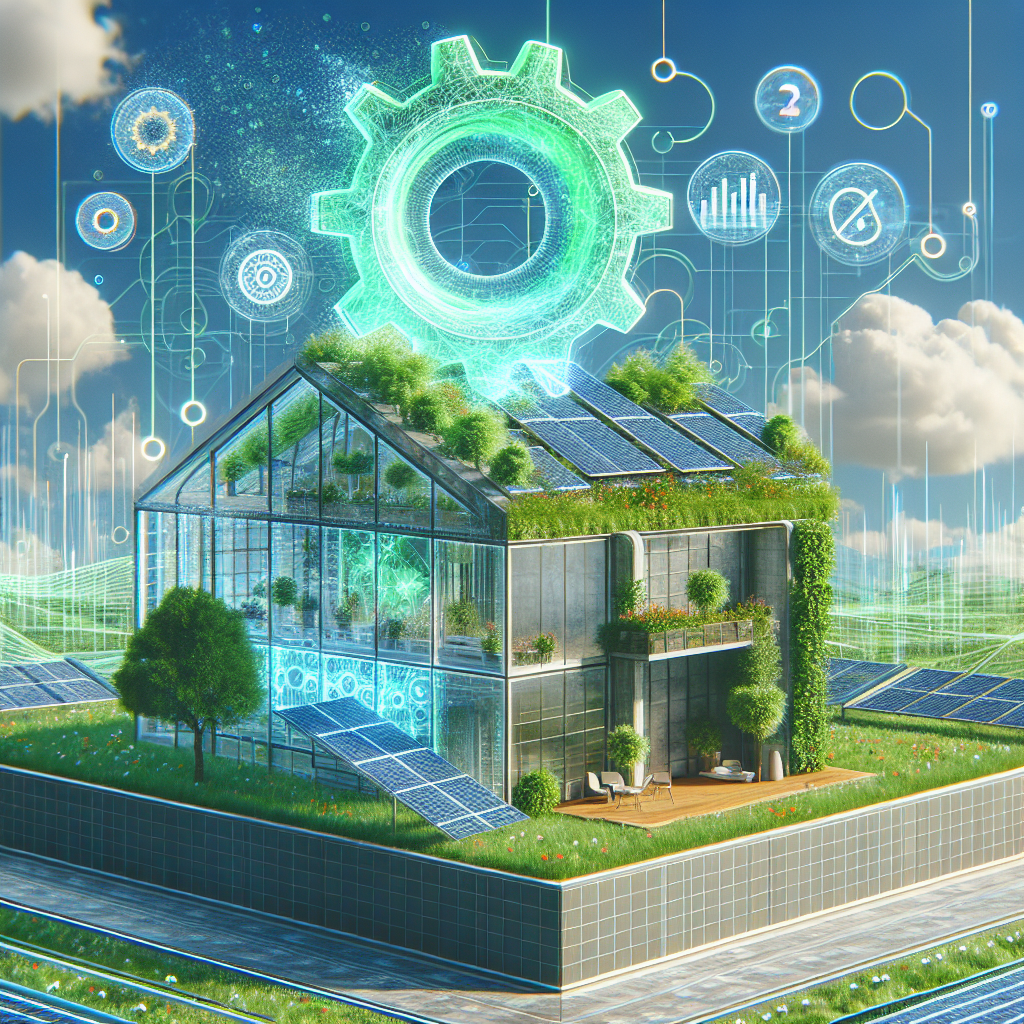As the world continues to grapple with the effects of climate change, sustainable building design has become a top priority for architects, engineers, and developers. By incorporating green building practices and technologies, such as energy-efficient systems and materials, buildings can reduce their environmental impact and contribute to a more sustainable future. One of the key technologies that is revolutionizing sustainable building design is artificial intelligence (AI).
AI is being leveraged in various ways to optimize the design, construction, and operation of buildings, leading to improved energy efficiency, reduced waste, and lower costs. From automated building design software to predictive maintenance systems, AI is transforming the way buildings are conceived, built, and managed.
Automated Building Design
One of the most significant ways AI is being used in sustainable building design is through automated building design software. These tools use AI algorithms to analyze data and generate optimized building designs that maximize energy efficiency and minimize environmental impact.
By inputting parameters such as building size, location, orientation, and desired energy performance goals, AI-powered design software can quickly generate multiple design options that meet the specified criteria. These designs can then be further refined and optimized to achieve the desired sustainability goals.
AI algorithms can also analyze vast amounts of data to identify patterns and trends that can inform design decisions. For example, by analyzing historical weather data for a specific location, AI can recommend building orientations and materials that will maximize natural light and minimize heating and cooling loads.
Predictive Maintenance
Another key application of AI in sustainable building design is predictive maintenance. By using sensors and AI algorithms to monitor building systems in real-time, facilities managers can detect potential issues before they escalate into costly repairs.
For example, AI-powered predictive maintenance systems can analyze data from HVAC systems to identify patterns that indicate when a component is likely to fail. By replacing the component before it breaks down, building owners can avoid downtime, reduce energy waste, and extend the life of the equipment.
Energy Management
AI is also being used to optimize energy management in buildings, leading to significant cost savings and environmental benefits. By analyzing data from building automation systems, weather forecasts, and occupancy patterns, AI algorithms can optimize the operation of heating, cooling, and lighting systems to minimize energy consumption while maintaining occupant comfort.
For example, AI-powered energy management systems can adjust thermostat settings based on occupancy levels and weather conditions, turn off lights in unoccupied areas, and optimize the operation of renewable energy systems such as solar panels and wind turbines.
FAQs
Q: How does AI improve sustainable building design?
A: AI improves sustainable building design by analyzing data, generating optimized designs, and optimizing building systems for energy efficiency. By leveraging AI algorithms, architects and engineers can design buildings that minimize energy consumption, reduce waste, and lower costs.
Q: What are some examples of AI applications in sustainable building design?
A: Some examples of AI applications in sustainable building design include automated building design software, predictive maintenance systems, and energy management systems. These tools use AI algorithms to analyze data, identify patterns, and optimize building performance.
Q: What are the benefits of using AI in sustainable building design?
A: The benefits of using AI in sustainable building design include improved energy efficiency, reduced environmental impact, lower costs, and enhanced occupant comfort. By leveraging AI technologies, buildings can achieve higher levels of sustainability and performance.
In conclusion, AI is revolutionizing sustainable building design by enabling architects, engineers, and developers to optimize building performance, reduce energy consumption, and minimize environmental impact. By leveraging AI algorithms and tools, buildings can achieve higher levels of sustainability and contribute to a more sustainable future. With the continued advancements in AI technology, the possibilities for sustainable building design are endless.

